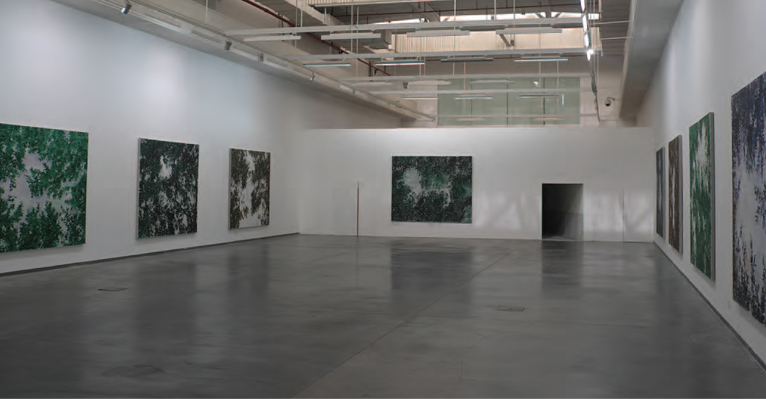ZHANG ENLI
| June 5, 2011 | Post In LEAP 8

Ten years have gone by since we first caught a glimpse of Zhang Enli’s early still-lifes. Amidst the turbulent waves of the past decade, Zhang’s paintings have served as a kind of placid calm. At a time when more and more painters have become eager to penetrate the canvas with a social gaze, Zhang continues to uncover the subtle beauty of the everyday. With each narrative brushstroke he practices restraint and sobriety; with a zeal for old, ordinary objects—buckets, ashtrays, paper rolls, floorboards, beds—he maps the traces that time leaves upon their surfaces, depicting these objects in an almost offhand and casual manner. There is also a rare richness and vibrancy of color in his work, a seldom seen vernacular that articulates ideas often difficult to express. These hidden messages are what leave such a profound impression on the viewer.
Zhang Enli’s solo show at the Minsheng is his first domestic exhibition of new works since 2008. However, his solo exhibition at Hauser & Wirth in London in early 2010 was an important turning point, when he first presented his “Sky” series: scenes of trees obscuring the sun, slivers of sky glimmering through the painted surface. The twelve “Sky” pieces shown in the current exhibition are bare and serene, exhaustively nuanced down to the smallest detail. The paintings show the four seasons, the setting sun, falling rain, and the first rays of morning. They reveal Zhang’s reflections on his own life—they are a repository for objective existence, while at the same time a vector carrying what is—as always—his “hidden element of the abnormal.”
His customary grid remains intact as a base layer in these paintings. Segmenting the painting surface outright, he breaks away from the degree of accuracy that would accompany a photo-based painting practice, cutting down visual depth in the process. Between the leaves and sky we witness subtle changes in color, light, and perspective. Painted stroke by stroke, the leaves overlap in carefully choreographed layers. Scattered across the background, they appear rootless. They circle together in a visual vortex, pulled into some remote center of space and time. Leaves become abstracted into a symbolic system; not mere visible objects, they become the foundation of Zhang Enli’s painterly language. The lyrical quality of these paintings is unlike the unrestrained flight of calligraphic style. Rather, when the brush hits the canvas, it is precise, measured, and contemplative. The viewer experiences a kind of psychological immersion with these works, one that progresses steadily deeper as the eyes cut through the leaves and extend toward the sky. The interwoven curtains of leaves, together with this gradually advancing spatial relationship between the layers, result in a kind of obstructive distance on the painting surface, unceasingly urging the viewer to return to her place in reality, and to question everything before her eyes.
In the exhibition’s other piece, a painted installation, Zhang Enli creates tension within what may appear to be the most prosaic of circumstances, as though he is shooting a silent suspense film with quiet, resolute focus and utmost composure. In a reconstruction of his own studio, he renders details down to the unrestored walls, the traces of where paintings once hung. To cite W. Somerset Maugham: “The mystic sees the ineffable, and the psychopathologist the unspeakable. His heart warms to him when he can bring forward some example of cruelty or meanness…he exults like an inquisitor at the auto da fé of a heretic.” Although Zhang Enli does not himself believe that his works possess metaphor, viewers will without fail attempt to excavate symbolic meanings from his works. Ascending into the thin, rarefied air surrounding these quiet images, the boundaries between fiction and reality may dissolve, and, just maybe, some new realization will be reached. Azure Wu


